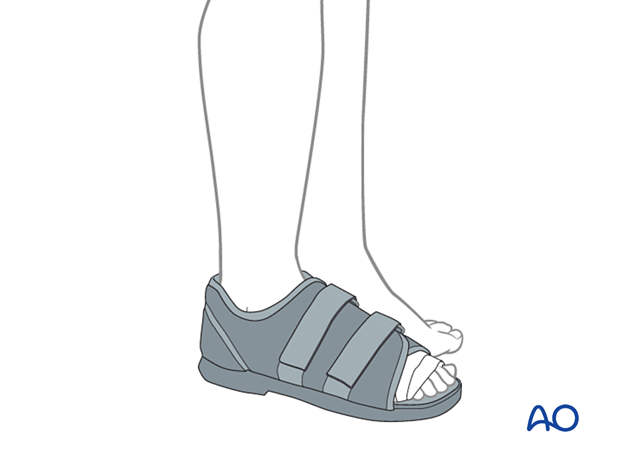Lag screws with or without protection plate
1. Principles
Indication
Indication for ORIF is malrotated and/or malangulated fractures.
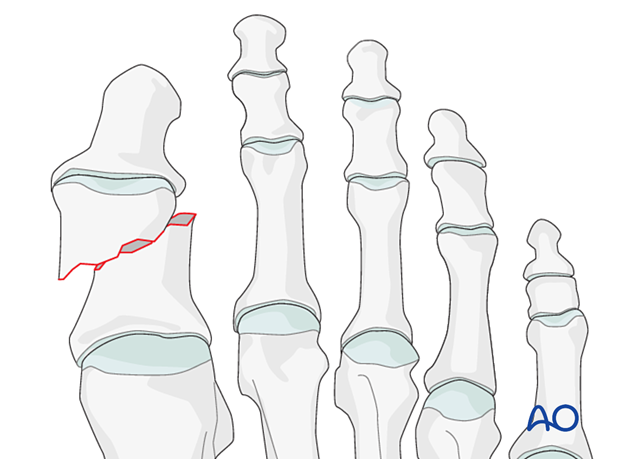
Stable fixation
ORIF with one or more lag screws may be performed.
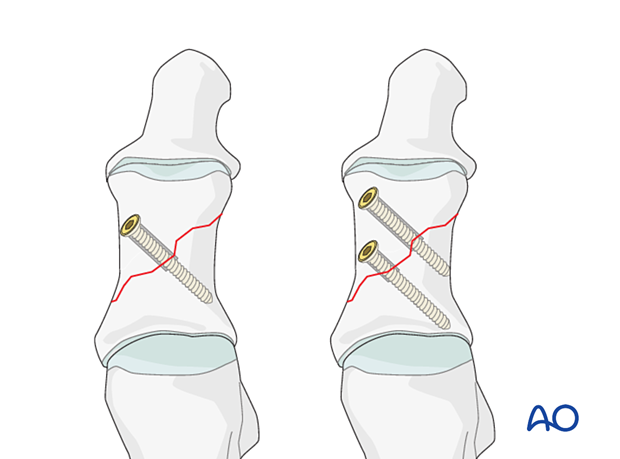
Protection plate
The fixation should be protected with a plate when only one lag screw is used or when further stability is desired. This permits a greater degree of stability which facilitates functional rehabilitation.
If possible, insert the lag screw through the plate to increase stability.
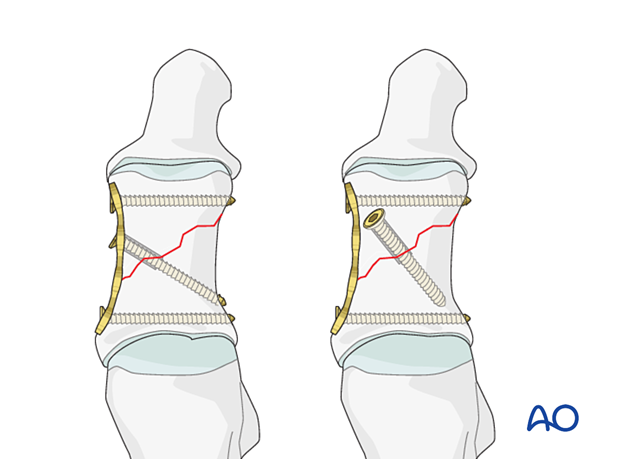
Toe fractures vs long bone fractures
Toe fractures are different from long bone fractures.
- The bones are very small
- Fracture gaps are small
- Fixation devices don't need to counter large forces
Thus, following the AO principles is less critical than for long bones, and often isolated screws or K-wires alone will work satisfactorily.
Restoration of length, rotation, and angulation are important for cosmesis.
Timing of surgery
The timing of surgery is influenced by the soft tissue injury and the patient's physiologic status.
Dislocation or injuries associated with the skin at risk requires immediate intervention regardless of the amount of soft tissue swelling.
If possible, swelling should be significantly decreased before surgery, which can take up to two weeks in some instances.
Open fractures should be promptly irrigated and debrided, and treated with antibiotics. Definitive fracture fixation may not be possible during this setting.
Forefoot fractures do not contribute to physiologic instability. If there is no soft tissue at risk, urgent intervention is not required.
2. Patient preparation and approach
Patient preparation
This procedure is typically performed with the patient placed supine and the knee flexed 90°.
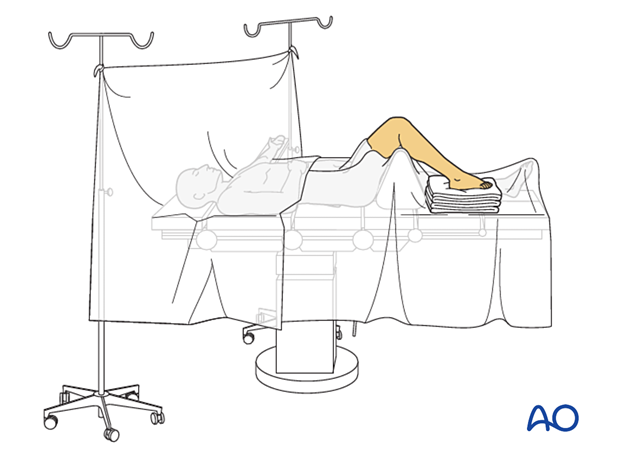
Approach
Diaphyseal fractures of the proximal phalanx of the hallux are best approached through either the:
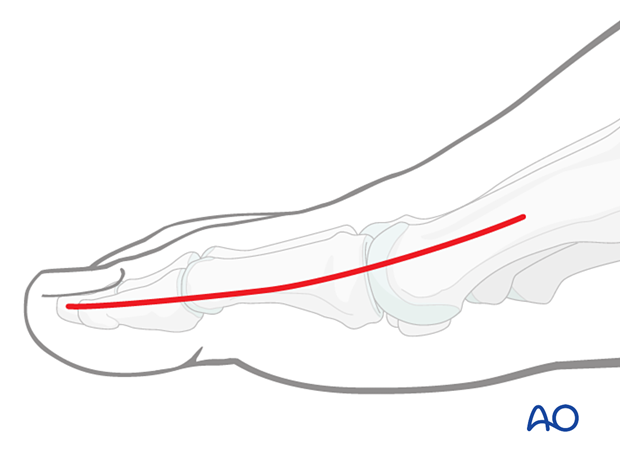
3. Reduction and preliminary fixation
Debridement
If an anatomic reduction is desired, it is crucial to debride the fracture site from the hematoma and invaginated periosteum.
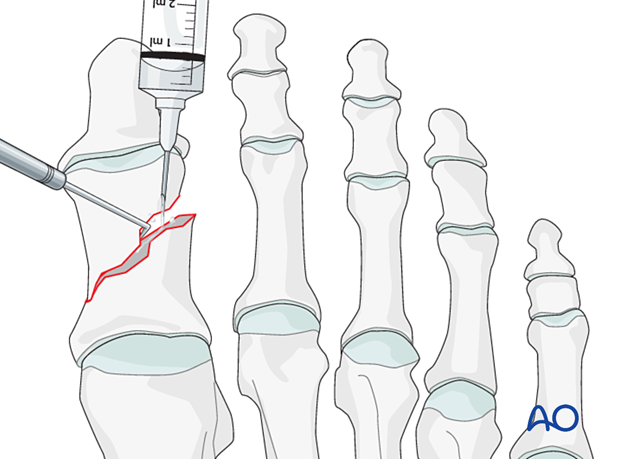
Direct reduction
Use a periosteal elevator as a lever to reduce the fracture.
Restore anatomical axial rotation, length, and angulation.
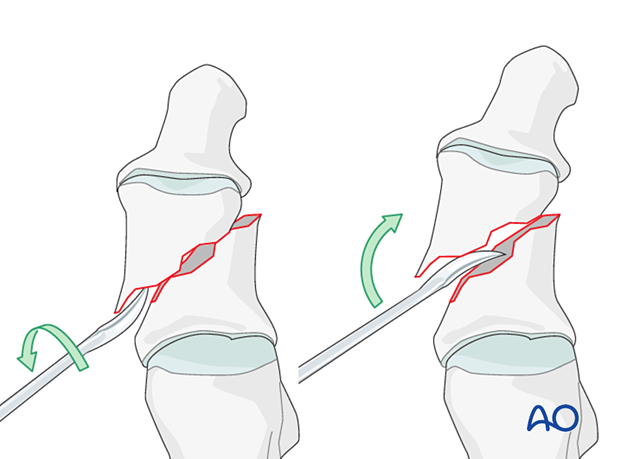
Placement of the clamp
Apply the points of the reduction clamp so that the points are at right angles to the fracture line. This helps in reducing the fracture and in applying compression.
Once reduced and compressed, the reduction may be maintained with a K-wire.
If using the clamp, it must be placed, so that lag screw placement is not blocked.
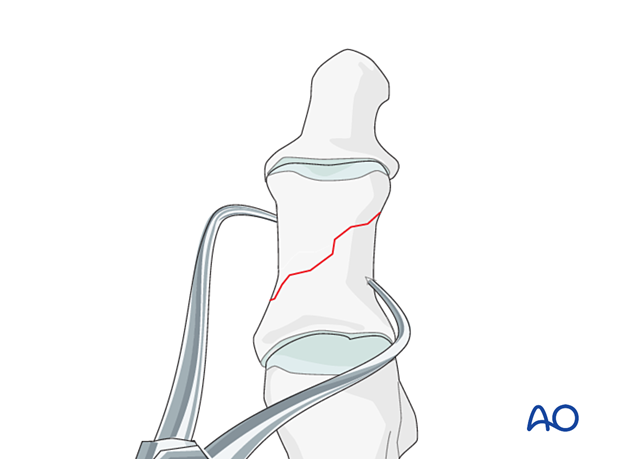
Preliminary fixation
The K-wire can be introduced through the same approach, but it must be positioned so that it will not interfere with subsequent fixation.
Temporary fixation can alternatively be achieved by inserting an axial K-wire.
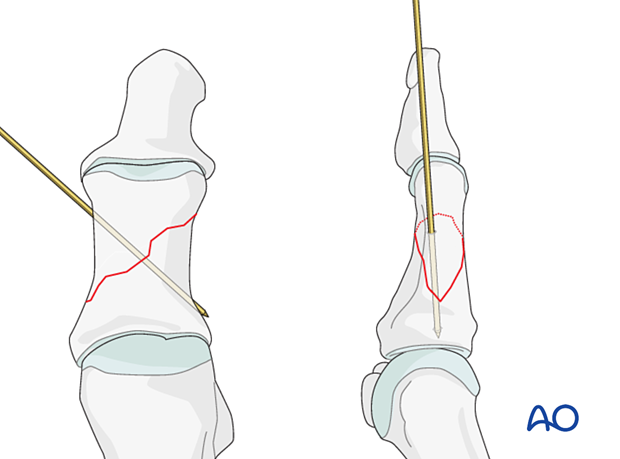
4. Lag screw fixation with or without protection plate
Lag screw insertion
These fractures usually have inherent stability, which makes lag screw fixation sufficient.
Insert a lag screw perpendicular to the fracture plane.
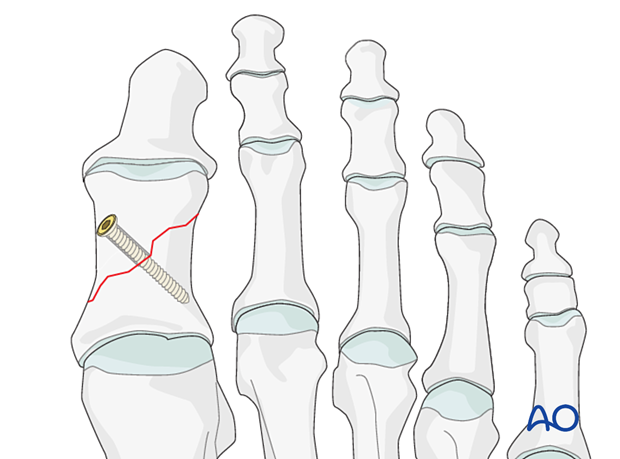
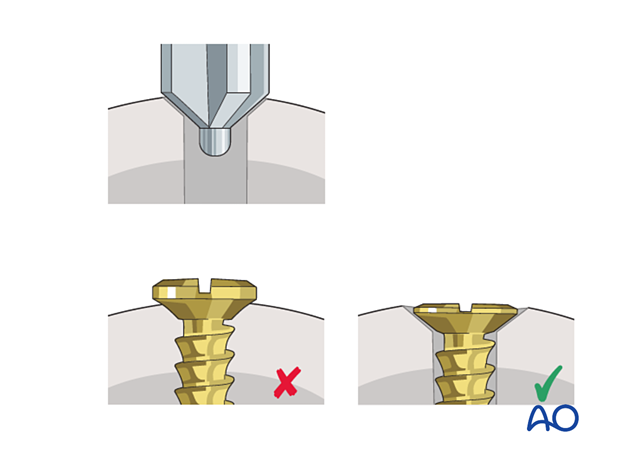
Occasionally a second lag screw may be inserted.
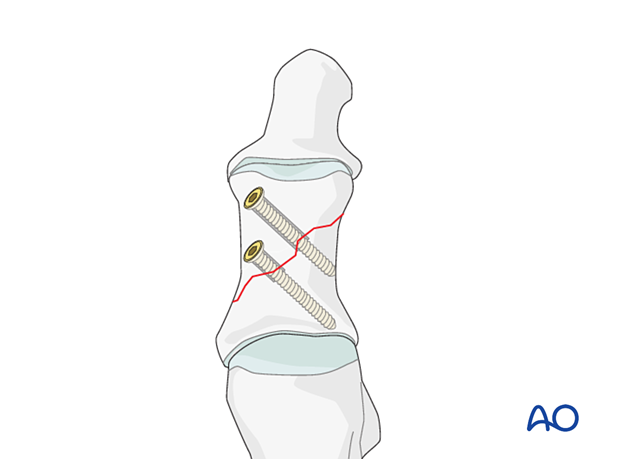
Protection plate application (if needed)
Preparation and shaping of the plateCut the plate to the appropriate length.
Bend and twist the plate to contour it to fit the anatomy of the bone.
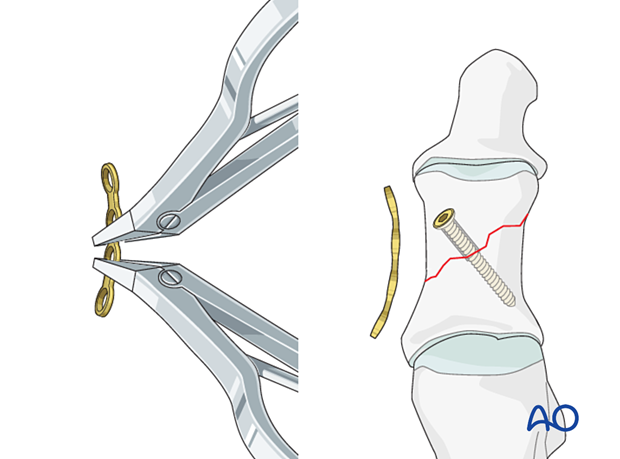
The plate is applied and anchored with screws.
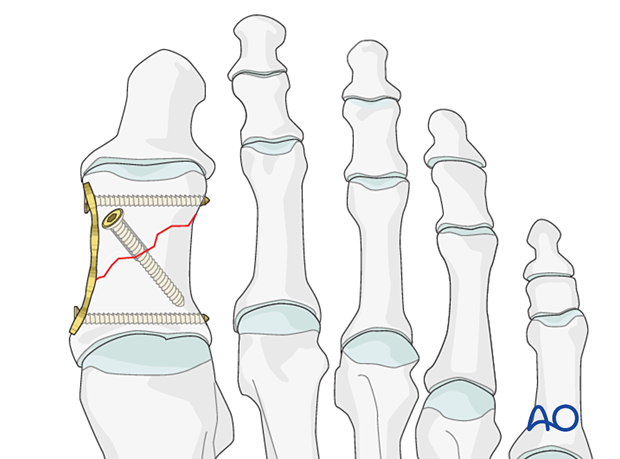
5. Fixation with a lag screw through a plate
Preparation and shaping of the plate
Cut the plate to the appropriate length.
Bend and twist the plate to contour it to fit the anatomy of the bone.
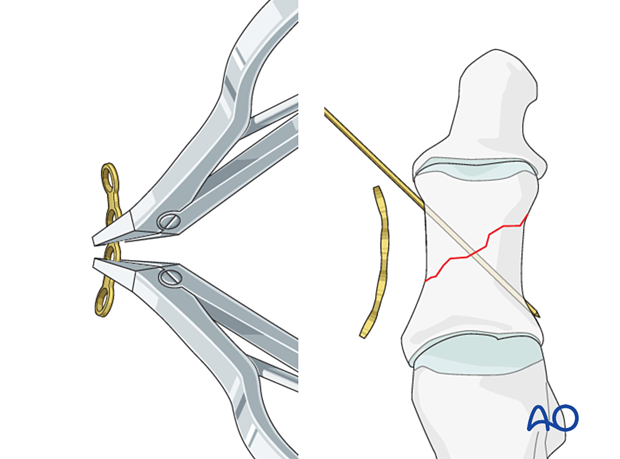
Plate application
If possible, the first screw is inserted to create an axilla into which the opposite fragment can be compressed.
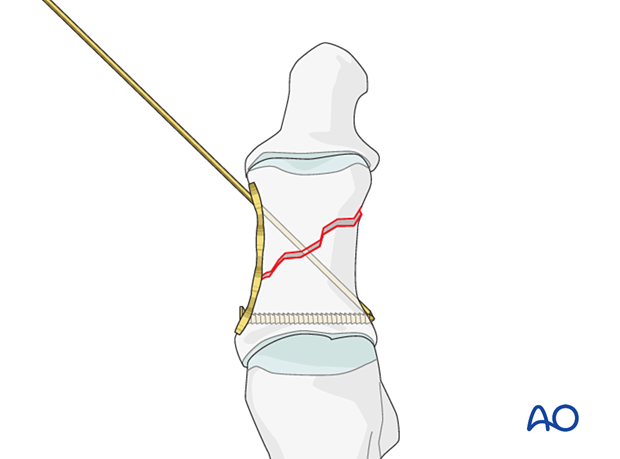
A lag screw is then inserted through the plate, which will increase stability. Additional screws are inserted in neutral mode to complete the fixation.
Plate application is analogous to compression plate applied for oblique fractures.
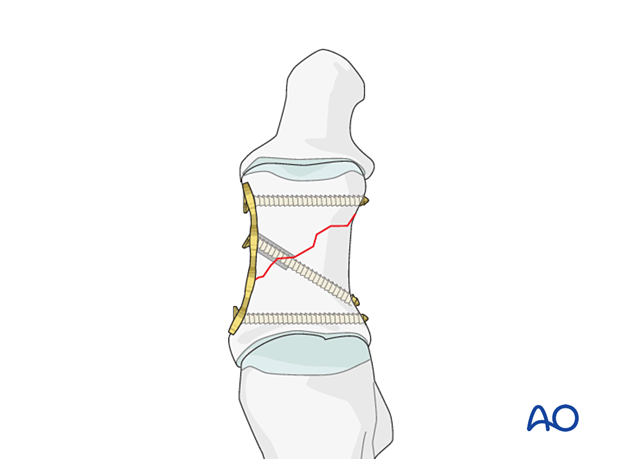
6. Aftercare
The surgical site must be protected until the soft tissues have healed.
We recommend a flat, rigid sole shoe for postoperative care and subsequent ambulation.
If such is not available, then a short leg cast would be necessary until ambulation is started.
